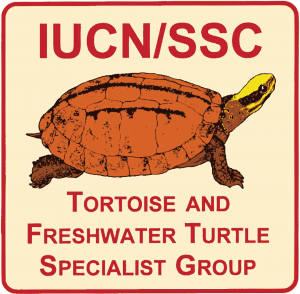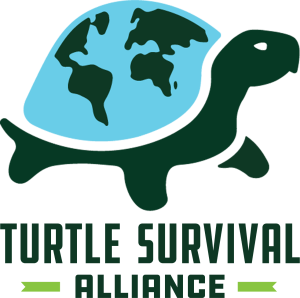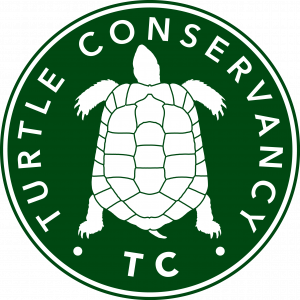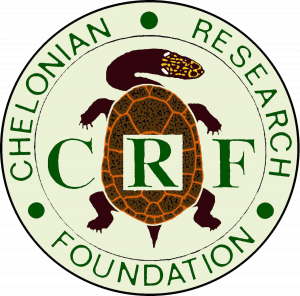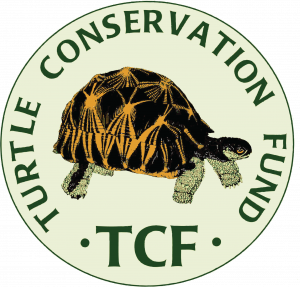Madagascar Turtle Workshop

Vision Sokatra Gasy — Madagascar Turtle Vision
Antananarivo, January 29, 2008: Madagascar is one of the world’s most important megadiversity countries and one of its highest priority biodiversity hotspots, with levels of endemism at the species, genus, and family levels that are unsurpassed among the world’s priority regions. Madagascar is also a country that has suffered greatly from loss of natural habitat, with more than 90% of its original natural vegetation already gone and habitat destruction continuing in many of the most important remaining areas of natural habitat.
Fortunately, President Marc Ravalomanana of Madagascar has recognized both the threat and the enormous scientific and economic value of his country’s biodiversity and has taken major steps to ensure its survival. In September 2003, at the World Parks Congress in Durban, South Africa, he took the bold step of committing to tripling the protected area coverage in his country over the next five years, and he is well on his way to meeting that commitment. What is more, he has made the environment a centerpiece in his national development strategy, the Madagascar Action Plan, which bodes well for the future. Nonetheless, many conservation issues remain to be resolved and many of Madagascar’s unique species and ecosystems remain at great risk.
People of Madagascar used to say “tsy ho lany ny ala atsinanana,” which literally means “the eastern forest will never disappear,” but now it is disappearing unless actions are taken to safeguard it. Likewise the radiated tortoise (sokake) was once too numerous to count, but now it also is disappearing before our eyes.
Among the most important and best known of Madagascar’s species are the tortoises and freshwater turtles, which include nine species, five of which are endemic, including three endemic genera (Astrochelys, Pyxis, and Erymnochelys). These animals, and especially the radiated tortoise (sokake ), the ploughshare tortoise (angonoka), and the Madagascar big-headed turtle (rere) rank with the indri, the sifakas, and the chameleons as Madagascar’s most important flagship species, symbols for which the country is renowned around the world.
Unfortunately, these turtles and tortoises are at very high risk of extinction and have been heavily impacted by human activities, especially in the last few decades. All have been affected by habitat destruction, some by hunting as a food source, and others by live capture for the illegal international wildlife trade. Previous meetings of conservation specialists have highlighted the threats facing Madagascar’s turtles and tortoises, but the situation of all five endemic species has continued to decline.
To help remedy this situation, some 80+ conservation specialists from Madagascar and 12 other countries met in Antananarivo, Madagascar, from January 14-17, 2008 to carry out an IUCN Red List assessment of the conservation status of Madagascar’s turtles and tortoises and to develop an Action Plan to identify specific projects and other interventions needed to ensure the survival of these important animals. The workshop was entitled Turtles on the Brink in Madagascar: A Workshop on Current Status, Conservation Prioritization, and Strategic Action Planning for Madagascan Tortoises and Freshwater Turtles. Convened by the IUCN/SSC Tortoise and Freshwater Turtle Specialist Group and Madagascar’s Ministère de l’Environnement, des Eaux et Forêts et du Tourisme, the workshop was co-organized by Wildlife Conservation Society, Conservation International, and Durrell Wildlife Conservation Trust, with participation, support, and partnership from multiple organizations, including ANGAP (Parcs Nationaux Madagascar), WWF, Turtle Conservation Fund, Shellshock Campaign, Chelonian Research Foundation, IUCN Turtle Survival Alliance, Behler Chelonian Center, Frankel Family Foundation, Moore Family Foundation, and George Meyer and Maria Semple. A summary of the results of this important meeting are presented here.
Five turtle and tortoise species, the radiated tortoise or sokake (Astrochelys radiata), the ploughshare tortoise or angonoka (Astrochelys yniphora), the spider tortoise (Pyxis arachnoides sspp.), the flat-tailed tortoise or kapidolo (Pyxis planicauda), and the Madagascar big-headed turtle or rere (Erymnochelys madagascariensis), all endemic to Madagascar, were all assessed as Critically Endangered, the highest possible IUCN Red List category of threat of extinction. For all these species, this represented a major worsening of their survival status in comparison to their previous IUCN Red List assessments. This is a very high number of Critically Endangered species and represents a significant portion (approx. 1/6) of the global total of turtle taxa in this category (= 31 species and subspecies). The angonoka in particular is literally on the brink of extinction, with only a few hundred adults remaining in the wild.
The illegal trade in radiated tortoises (especially adults) as a source of food to serve major regional markets in Tuléar and Fort-Dauphin was recognized as a major threat to the survival of this very important species, and it was recommended that a special Tortoise Brigade be created to monitor and control this trade. Unfortunately, most of these illegal activities are going unpunished in spite of the appropriate protective legislation being in place and the strong desire of local communities in the range of these tortoises to have the problem addressed and curtailed.
In addition to this regional trade of radiated tortoises for food, there is also an ongoing major illegal trade in small radiated tortoises and spider tortoises for the international pet trade, with confiscations occurring often both within and outside Madagascar.
Local communities within the range of the radiated tortoise have expressed concerns that they would like to see these animals repatriated or reintroduced to the areas around their villages where populations have been decimated by the illegal trade. The fate of tortoises confiscated from the trade was discussed, and it was recommended that the existing Village des Tortues at Ifaty could play a key role in holding, quarantining, and eventually redistributing confiscated animals, as well as serving an important education function.
Additionally, the illegal trade demand for the angonoka and the kapidolo represents a major threat to these species as well, with the angonoka in a particularly vulnerable position because of its very small and remote habitat and its very high value on the illegal international pet market. The relatively recent inclusion of the the kapidolo on CITES Appendix I seems to have had significant success in decreasing the international trade in that species, at least for now, but the angonoka continues to be smuggled out despite being on CITES Appendix I as well. Several recent confiscations highlight this ongoing severe threat.
As a potential means to achieve protection and local community value for radiated tortoises, it was proposed to focus on reversing the status decline and the trend in regional trade of the species over the course of the next few years, and to also develop economic incentives for its conservation with local communities, including prospects for developing eco-tourism focused on this charismatic species, as well as considering the potential for breeding centers for the international trade, guided by appropriate CITES regulations.
The need for major community involvement at the village level – as part of a national effort to decentralize authority – was identified as a critical element in efforts to protect the radiated tortoise, including creation of demonstration projects of reintroduction and protection of tortoises in selected villages, essentially pilot projects to demonstrate successful synergy between local communities, NGO’s, and governmental organizations. The creation of Mobile Education Units to increase awareness of the issue within the region was also recommended as part of this effort.
Previously, some of these species were protected by local traditions, such as the Antandroy and Mahafaly fady (taboo) protecting the sokake, as well as other traditions regulating fishing practices in the range of the rere. These cultural traditions have partially broken down over the past few decades, but should be revitalized as part of the overall conservation effort. More detailed survey work to determine the precise distribution and status of remaining populations was identified as a high priority for the radiated tortoise, the spider tortoise, the flat-tailed tortoise, and the Madagascar big-headed turtle. The precise distribution of the angonoka is well known, tiny as it is, but continued vigilance on the status of the remaining wild populations remains a very high priority.
The need to identify key unprotected habitats and propose them as new protected areas in the Durban Vision process was cited as a priority for the radiated tortoise, the spider tortoise, and the Madagascar big-headed turtle. New protected areas are not necessary for the ploughshare tortoise and the flat-tailed tortoise, the entire remaining ranges of which are included in existing national parks declared in part under the Durban Vision.
Continued reintroduction of captive-reared animals into depleted habitats was recognized as a priority for the ploughshare tortoise and the Madagascar big-headed turtle. Reintroduction of trade-confiscated radiated and spider tortoises into areas of local extirpation was also recommended.
Captive-breeding programs were identified as priority safety measures (assurance colonies) for all species, both within Madagascar and internationally. Colonies of radiated tortoise, spider tortoise, and flat-tailed tortoise already exist both within Madagascar and internationally. In contrast, the Madagascar big-headed turtle and the ploughshare tortoise only have a single colony each, both at the Ampijoroa Station in Ankarafantsika National Park in Madagascar, but none outside the country.
Recognizing the importance of the captive breeding program to the survival of the ploughshare tortoise, the facility and capacity of Ampijoroa should be significantly expanded in the near future. The establishment of additional assurance colonies for the ploughshare tortoise, both within and outside Madagascar, was recommended as an important precautionary safety measure to avoid catastrophic loss of the single existing colony and to help ensure the survival of the species. Just as importantly, confiscated ploughshare tortoises should be integrated into accredited captive breeding programs, either within or outside Madagascar.
It was also noted by the workshop participants that there is an overall lack of adequate financial resources to carry out the priority activities identified. A cadre of conservation professionals and dedicated individuals exists to carry out the conservation activities required, but adequate funding has in general not been available. One of the objectives of this Action Plan will be to help raise additional resources focused on Madagascan turlte and tortoise conservation, and to help guide their most effective and prioritized disbursement.
Lastly, the participants created an informal Madagascar Turtle Conservation Working Group as their authorship name for work and recommendations emanating from the workshop, and recommended the formal establishment of a Madagascar-based Turtle and Tortoise Advisory Committee in which government authorities, conservationists, scientists, and community leaders would work together to help local communities benefit from wise and sustainable use of Madagascar’s natural turtle and tortoise treasures.
During closing ceremonies for the workshop, with the Minister of Ministre de l’Environnement, des Eaux et Forêts et du Tourisme in attendance, several international organizations made significant initial commitments of financial resources to bring to bear on the numerous focused actions identified in the preliminary Action Plan, with over $300,000 committed to support a variety of immediate and long-term projects, both specific and general.
The participants in the Turtles on the Brink in Madagascar workshop concluded the meeting with a sense of hope that by working together they would achieve their conservation goals with success through synergy and help keep Madagascar’s turtles and tortoises off the brink of extinction.

